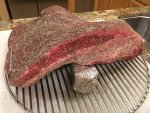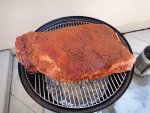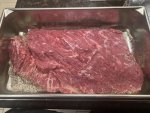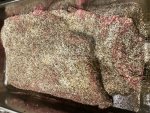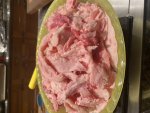ChristopherC
TVWBB Super Fan
Will be doing my first brisket on a WSM 18 this week. It is a 17.5lb hunk of meat. Which I am sure will be a couple lbs lighter after I trim.
Trying to plan ahead a bit...what should I expect in terms of cooking and resting time?
Any other things I should keep in mind with this cook?
Trying to plan ahead a bit...what should I expect in terms of cooking and resting time?
Any other things I should keep in mind with this cook?

